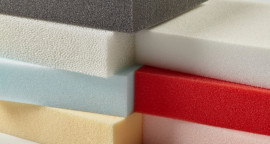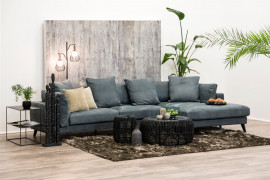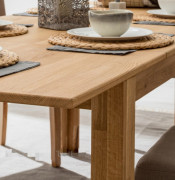Tips for Making Your Home Interior Attractive
Colors:
Color Combinations: Mix light and dark colors on the walls to create a dynamic and appealing space. Avoid monochromatic rooms, as they can appear dull.
Neutral Colors: Contrast neutral colors to add depth and interest to the interior. For example, light gray and dark brown can create an elegant atmosphere.
Bright Colors: Bright colors can create a sense of heaviness, so use them sparingly by adding accents rather than overwhelming the space.
Unity Effect: Colors can achieve a sense of unity by defining areas and creating a smooth transition between rooms.
Stability: You will feel more comfortable if the floor is darker, the walls slightly lighter, and the ceiling the lightest. This creates a sense of stability.
Expanding Space: Light and cool shades can make a space feel larger, while bright and dark colors can make it feel smaller. Dark ceilings may create an oppressive effect, so consider how to accentuate areas within the room.
Soft Furniture:
Texture Play: Play with various textures to create an interesting visual experience.
Mixing Colors and Textures of Fabrics: Combine colors and textures of soft furnishings to add liveliness to the room.
Proper Proportion and Placement: Before purchasing soft furniture, choose the right proportions and placement within the room. Sofas should be positioned so they do not block doorways or obstruct access to windows.
Choosing Sofas: Corner sofas take up more space and may be less functional than straight sofas, so choose according to your needs.
Case Furniture:
Movable Furniture: Opt for movable furniture to prevent the space from appearing bulky.
Proper Placement: The correct arrangement of case furniture is essential for creating a functional and attractive interior.
Window Treatment:
Function of Curtains: The primary function of curtains is aesthetics and functionality. In small spaces, it’s best to avoid bright colors in window treatments.
Placement of Curtain Rods: For high ceilings, the rod can be placed above the window, while for low ceilings, it’s better to mount it close to the ceiling to create a sense of height.
Visual Effect of the Ceiling: A rod at the ceiling raises the visual height, while a rod above the window lowers it.
Fabric Selection:
Use SPC fabrics that protect the room from overheating and avoid heavy fabrics like velvet, which can appear bulky.
Lighting in Rooms:
Natural Light: A room should have at least 10% of its floor area in windows to provide sufficient natural light.
Assessing Room Lighting: Before installing lighting, evaluate the natural light in the room and allocate appropriate lighting for each area.
Lighting Power: It is recommended to use 2-5 watts of LED bulbs per square meter as the minimum lighting power. Thus, a 10 m² room should have at least 100 watts (1200 lumens).
Light Temperatures:
- 2700K — warm light
- 4200K — white light
- 6400K — cool light
By following these recommendations, you can create an aesthetically pleasing and functional interior that reflects your style and makes your home comfortable.


